- Islington as a Place of Refuge – Tour Stop 4
- Significance: Where anti-apartheid material was produced
Apartheid was official policy of institutional racism and segregation in South Africa between 1948 and 1994. It was a system designed to disempower black South Africans and ensure the white population remained in power. In the face of brutal repression, marginalised South Africans and their supporters fought against the apartheid regime, backed by people from all over the world. Many people in Islington joined the fight. They took part in demonstrations, boycotted South African goods, went undercover in South Africa and campaigned for political prisoners to be released. Islington was home to the African National Congress (ANC) London headquarters between 1978-1994, forming a base for actions around the country, and the ANC’s print shop in Islington at 1 Mackenzie Road would provide a space to print materials promoting the Anti-Apartheid cause.

Following the 1948 election, the ANC joined the South African Indian Congress, the Coloured People’s Congress and the white Congress of Democrats to fight apartheid. The ANC Youth League began a ‘Programme of Action’ employing boycotts, strikes and civil disobedience. In 1955 many of those opposed to apartheid created the ‘Freedom Charter’ – a vision for a multi-racial South Africa. Some black South Africans broke away to form the Pan-Africanist Congress (PAC). The South African apartheid government responded with the five-year long Treason Trials. On 21 March 1960 the PAC organised a demonstration in Sharpeville Township against the pass laws, which controlled movement of black South Africans. The police opened fire on the crowds, killing 69 people. The government declared a state of emergency, arrested 18,000 people and banned the PAC and the ANC, forcing the organisations underground and initiating an armed struggle. In 1963 ANC leaders were arrested at their secret headquarters in Rivonia. Eight were sentenced to life imprisonment for sabotage. Over the next two decades the South African apartheid government responded to activism with the brutal repression of its population, and the detention and torture of political activists.
The injustice of the apartheid system led to growing anger all over the world. South African exiles in London brought stories of apartheid to the British public. This included Sylvester Stein, who was editor of DRUM, a magazine fighting for the rights of black South Africans. As the South African government brutally cracked down on dissent, Stein escaped to Islington in 1957.
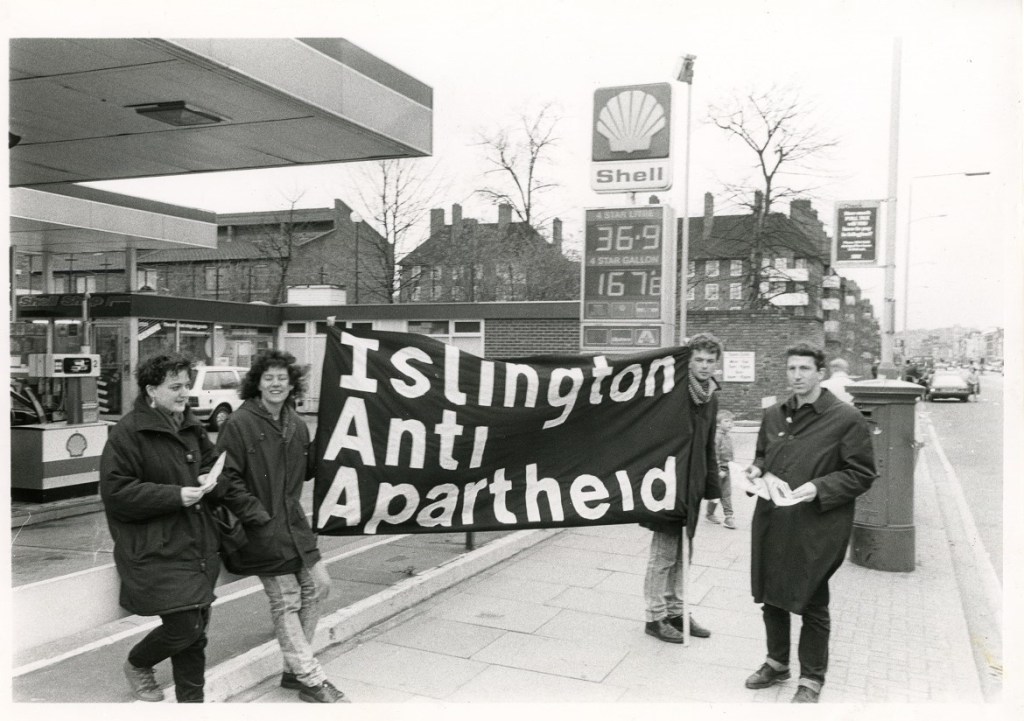
Islington Anti-Apartheid Group was one of many local campaign groups in Britain, supported by the Anti-Apartheid Movement (AAM) head office. Campaigners promoted the boycott of South African goods in supermarkets and targeted companies which supported apartheid. The Islington AAM group held fundraising benefits, raised awareness and collected funds for the fight against apartheid. The City of London AAM group was formed in 1982 and led by Norma Kitson, a South African exile who lived in Islington. From 1986 they ran a four-year non-stop picket outside the South African Embassy protesting against the apartheid regime and for the release of political prisoners.

Islington Council formed its first Race Relations Committee in 1979 and began its long connection with anti-apartheid groups. In 1983 it was one of the founding members of the Local Authorities Against Apartheid (LAAA) campaign, adopting charters to disinvest from South Africa and providing support in-kind to the movement; However, from 1986 restrictions on ‘political actions’ by local authorities were brought in by Prime Minister Margaret Thatcher limiting future LAAA actions.
The ANC London headquarters was located at 28 Penton Street, Islington from 1978 to 1994. It formed a base for actions around the country under the leadership of Oliver Tambo. Tambo was born 1917 in Bizana, South Africa. After receiving an education at mission schools, he attended the University of Fort Hare where he received a Bachelor of Science in 1941 and subsequently studied law. Along with Nelson Mandela, Tambo was a cofounder of the ANC Youth League in 1944. Briefly teaching in Johannesburg, Tambo then threw himself wholeheartedly into nationalist politics and law, opening South Africa’s first black law practice with Mandela in 1952. In 1958 he became ANC deputy president.
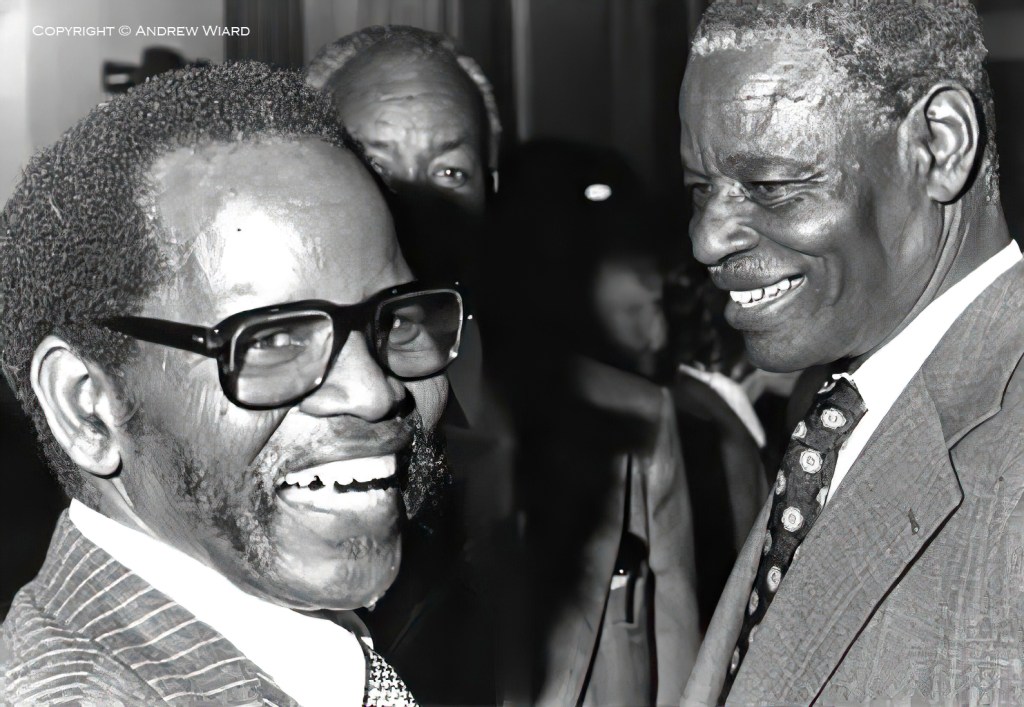
As a result of the South African government’s outlawing of the ANC after the Sharpeville massacre, Tambo left to set up the ANC’s foreign headquarters. He would spend more than 30 years in exile (1960–90), located predominantly in Lusaka, Zambia and in London during this time. Under his leadership young, white, non-South African men and women who could enter South Africa without suspicion were recruited to the ANC cause. Many ‘London Recruits’ were enlisted by Ronnie Kasrils from the Young Communist League, and the London School of Economics. Islington was the home of several of the recruits, although due to strict secrecy they were not aware of each other at the time. The recruits travelled to South Africa, smuggling in letters and weapons, unfurled banners and undertook reconnaissance keeping the fight against apartheid alive. In summer 1970, London Recruits converged on five cities in South Africa, a cassette player broadcasting ANC speeches and freedom songs whilst they simultaneously detonated leaflet bombs, blasting ANC leaflets into the air.
Leaflets were an important way of educating and communicating with the masses on the struggle against apartheid. The ANC print shop at 1 Mackenzie Road, Islington was where the ANC materials were printed in the 1980’s and 1990’s, but also where the ANC Media Committee would meet to discuss press campaigns countering South African claims and to gather support in Britain for the anti-apartheid struggles. Such campaigns included the boycotts, fund-raising and sanctions.
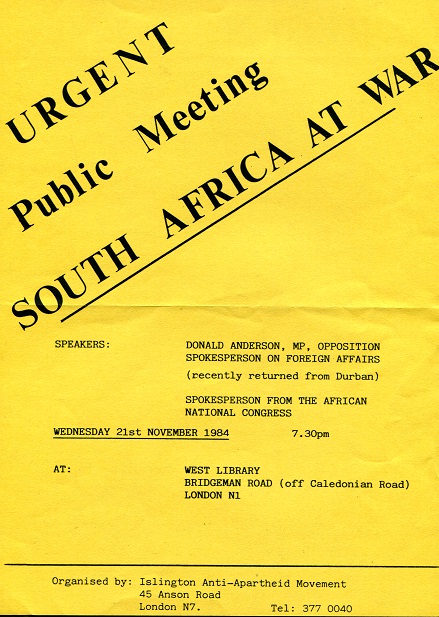
During the 1980s the South African apartheid government targeted anti-apartheid activists with burglary, arson and bombs. The most significant action in Britain happened on 14 March 1982 when a bomb was detonated at the Islington ANC headquarters. An ANC march had been organised for that day, and the bomb may have been intended for Tambo who often held early-morning briefings. An ANC researcher, asleep in the building, was injured and nearby buildings had their windows blown out. Most felt the South African state was involved in the attack and in 1999 nine South African security policemen admitted to the attack during an amnesty hearing of the Truth and Reconciliation Commission in Pretoria.
By the 1980s South Africa was increasingly isolated. Resistance was growing in South Africa, while anti-apartheid activists across the world put pressure on the regime and their own governments. Calls for the release of Nelson Mandela grew louder and culminated in a concert at Wembley Stadium for his 70th birthday and the 1988 Freedom Rally in Hyde Park which started from Finsbury Park. By the end of the decade the position of the South African government was untenable. In 1990 the ban on the ANC, PAC and South African Communist Party was lifted. Oliver Tambo was able to return to South Africa and Mandela was released after serving 27 years in prison. Islington was one of 42 local councils which declared on his release: ‘The elimination of apartheid is a responsibility of all citizens and their representatives, wherever they may live’. In 1994 Nelson Mandela became President in South Africa’s first democratic election.
Upon Mandela’s election, the ANC moved out of Penton Street in 1994 and the LAAA movement transformed into ‘Action on Southern Africa’, continuing to provide support for previously marginalised South Africans from Penton Street until 2006. Islington Council supported initiatives such as Denis Goldberg’s ‘A Book and Ten Pence’ campaign, with the launch took place at Islington Town Hall. ‘A Book and Ten Pence’ was a drive that saw almost two million second-hand children’s books and tenpences sent to the black townships in South Africa, encouraging literacy and growth in amongst those who had been cruelly sidelined for decades.
“During the difficult years in the run-up to liberation we could always contact the office in Penton Street and find out how the struggle was being seen internationally”
High Commissioner for South Africa Dr Skweyiya at Penton Street’s plaque unveiling
With thanks to the Marx Memorial Library and AAM Archives for their contribution to this article.
This article was produced for Islington as a Place of Refuge, an online tour developed by Islington Museum and Cally Clock Tower, in conjunction with Islington Guided Walks. Centred around Refugee Week 2020’s theme of ‘Imagine’, Islington as a Place of Refuge explores diverse stories from migrant history in relation to the London Borough of Islington.


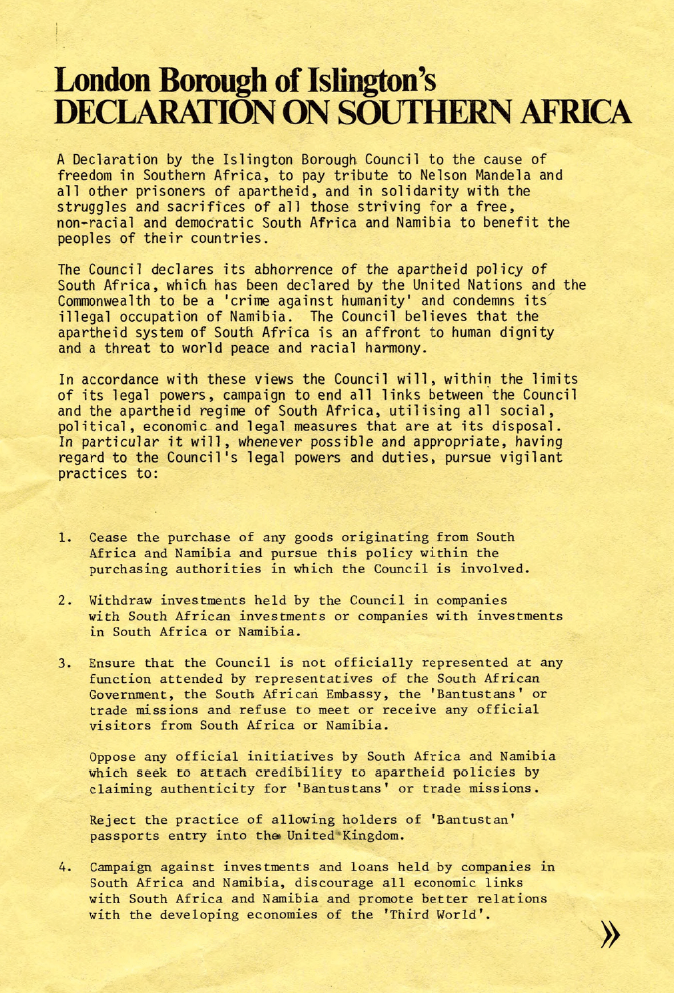

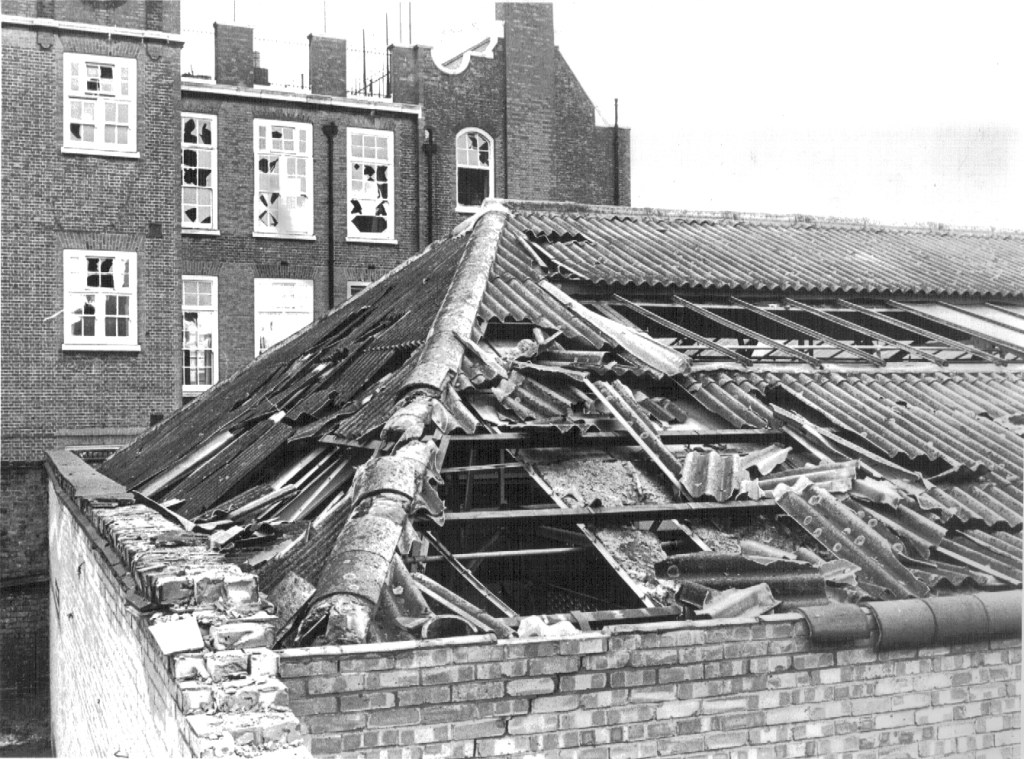
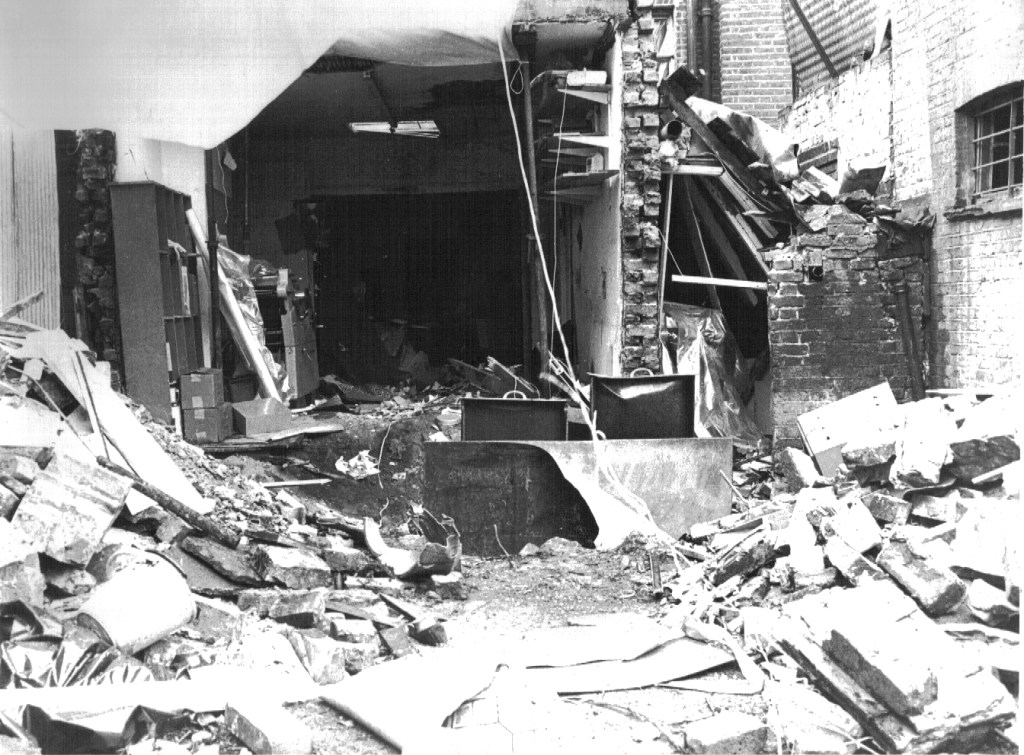
Leave a comment